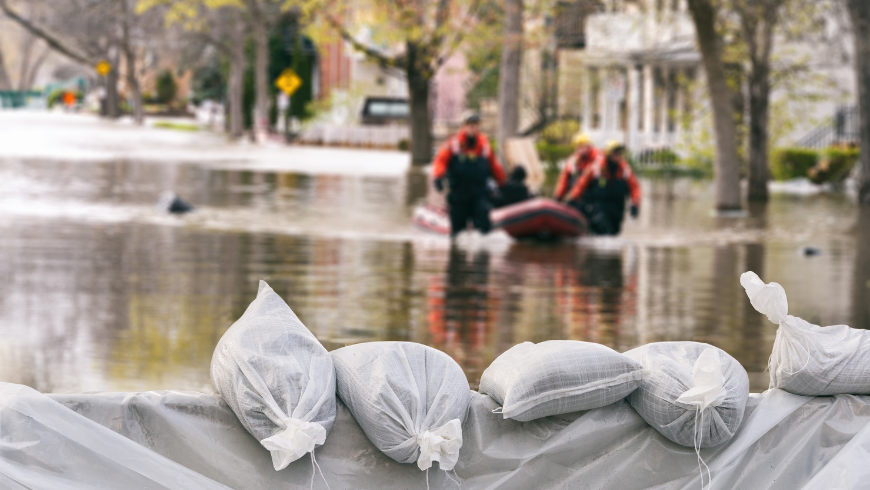44 results found
Featured results



More results
In 2018, after 3 years of droughts, the city of Cape Town in South Africa faced severe water shortages. Dam reservoir capacity had dropped to critical levels and the city was fast approaching “Day Zero” of no water availability. Desalination, new dams, strict water usage limits – all solutions were on the table. Solving the water crisis in Cape Town required a variety of activities, including gray infrastructure, behavioral change, pricing changes, and a massive communications campaign. Among all these approaches, one important contribution was surprising: the removal of invasive plant species.
Last month, Jane Jamieson, the Program Manager for the Quality Infrastructure Investment (QII) Partnership and the Public Private Infrastructure Advisory Facility (PPIAF), along with Khafi Weekes, Climate Infrastructure Specialist at PPIAF, and Helen Gall, Monitoring and Evaluation ETC at QII, participated in the Understanding Risk Global Forum in Himeji, Japan. Initiated in 2010, this year’s Forum was the largest yet, attracting over 1,700 Disaster Risk Management (DRM) and Climate Change Adaptation (CCA) experts and practitioners from across the globe. PPIAF and QII had a strong showing at the Forum, participating in five events, including three plenaries and two workshops.
Climate change poses a significant threat to infrastructure, with rising sea levels, extreme weather phenomena, and escalating temperatures posing substantial physical risks. These hazards can lead to the degradation of crucial infrastructure assets, undermining social, economic, and environmental stability. Recent analysis by EDHECInfra, as featured in the Global Infrastructure Hub's Infrastructure Monitor report, underscores the scale of the situation. Projections based on current climate and policy scenarios indicate that by 2050, infrastructure assets could see a net value decline of 4.4% on average, and up to 26.7% in the most severe scenarios. This depreciation is a direct consequence of the lack of resilience of global infrastructure to the effects of climate change. The consequences of inaction are far-reaching, affecting not just the financial performance of assets, but also the economic, environmental, and social fabric of communities worldwide. One promising strategy to mitigate these risks involves the adoption of a systemic resilience metrics (SRM) framework tailored specifically to infrastructure.
The Fourth Industrial Revolution (Industry 4.0) presents a significant opportunity for digital transformation in the infrastructure (architecture, engineering, and construction) industry. This sector, traditionally reliant on manual labor, mechanical technology, and traditional business models, has seen limited innovations in productivity compared to many other global industries. However, new digital technologies, particularly InfraTech solutions like drone technology, offer a promising pathway to revolutionize this industry.
Birkdale is a coastal locality in the City of Redland, Queensland Australia. Jacobs was engaged by Redland City Council to provide social impact and social value measures for input into the Master Plan for the 62-hectare Birkdale Community Precinct.
What are nature-based solutions, and what role do they play in meeting SDGs and the transition to net zero?
Sam Barr outlines several opportunities for decisionmakers at COP28 to commit to delivering infrastructure for social equity.
Vicki Cerullo, Acting Executive Director, New York City (NYC) Mayor’s Office of Climate & Environmental Justice, explains the city’s latest action plan for a cleaner, greener, and more just city, and outlines the plan’s key initiatives, and achievements.
Learn how the transition pathways for sustainable infrastructure link long-term sustainability goals with infrastructure plans.
EyeRADAR provides a game-changing solution for managing slop stability, enhancing safety, and reducing the risks associated with linear infrastructure projects.
Durophalt and Durophalt-E are sustainable, durable, and cost-effective road maintenance solutions that replace traditional asphalt repair processes, reducing emissions and prolonging road lifespans.
TRL is using satellite imagery and artificial intelligence to assess the condition of rural, unpaved roads more efficiently.
irisGO™ is an AI-enabled camera that facilitates smarter condition monitoring by automating data gathering and analysis of road assets and defects in real time, enabling faster and more secure maintenance for safer roads.
COLPISTE is a combination of a soil stabilisation solution and a cold layer that makes it faster, more affordable, and more sustainable to construct reliable, all-weather roads in rural environments in developing countries
McKinsey interviews our CEO, Marie Lam-Frendo about key strategies to help infrastructure leaders to attract private investment and meet net zero goals
Interrelated challenges are common bottlenecks in the planning process for linear infrastructure designed to address climate change. This article explores how the Linear Infrastructure Planning Panel is enabling InfraTech for accessible decisionmaking.

In this article, the authors explore the successes and failures of the built environment’s digital transformation to date, why the Smart City concept is necessary but not sufficient and 3 steps for achieving the Adaptive City of the future – one which works for everyone.


The Coalition for Climate Resilient Investment (CCRI) today announced that it has successfully completed the transfer of its portfolio of government and investor-focused climate tools, solutions, and financial instruments to not-for-profit partners. Supported by the CCRI board, the GI Hub is intended to take the role of Secretariat, responsible for collaborating with and supporting the CCRI legacy partners who will continue delivering the core programs begun by CCRI.
What qualifies as critical infrastructure, and what can governments and industry do to increase its resilience? We spoke to four experts for their perspectives.
The G20/GI Hub Framework on How to Best Leverage Private Sector Participation to Scale Up Sustainable Infrastructure, which sets out opportunity areas and actions for the G20 to enable the private sector to scale up its investments in sustainable infrastructure.









 Transition Pathways for Sustainable Infrastructure
Transition Pathways for Sustainable Infrastructure













